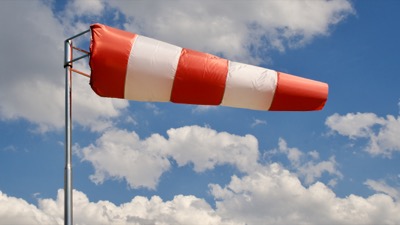Wind as an Error Source
Sponsored by:

Tip written by: Infraspection Institute
As individuals, most of us can appreciate the cooling effects of a breeze on a hot summer day. As thermographers, wind represents a greater technical challenge in the form of a potential error source when measuring temperatures radiometrically.

As wind moves across the surface of an object, convective heat transfer occurs. In general, wind will either cool a warm target or warm a cool target. The rate of convective heat transfer will primarily depend upon: velocity of the wind, temperature differential between object and wind, and surface film coefficient of the object.
Wind can significantly alter the temperature of an object while the windy condition is present. Frequently, the effects of wind may remain for a significant period of time after the wind has stopped and the object has returned to its normal temperature.
Because radiometric equipment cannot compensate for the effects of wind on an object, it is best to avoid wind when measuring object temperatures. To eliminate wind as an error source:
- Wait until wind stops
- Temporarily shield target from wind
- Measure downwind side of target provided that object is sufficiently large
Always allow sufficient time for target to return to normal temperature once wind has been eliminated. If it is not possible to avoid wind, one should report wind velocity and direction when recording image data.
Lastly, thermographers should resist any temptation to apply ‘Wind Chill Charts’ to correcting for the effects of wind. Wind Chill charts have been designed to estimate the net effect of wind and ambient temperature on exposed human flesh and are not applicable to inanimate or industrial objects.
The impact of convection on non-contact temperature measurements is just one of the many topics covered in all Infraspection Institute Level II Certified Infrared Thermographer® training courses . For more information on open enrollment classes or our Distance Learning opportunities, call 609-239-4788 or visit us online at www.infraspection.com.

